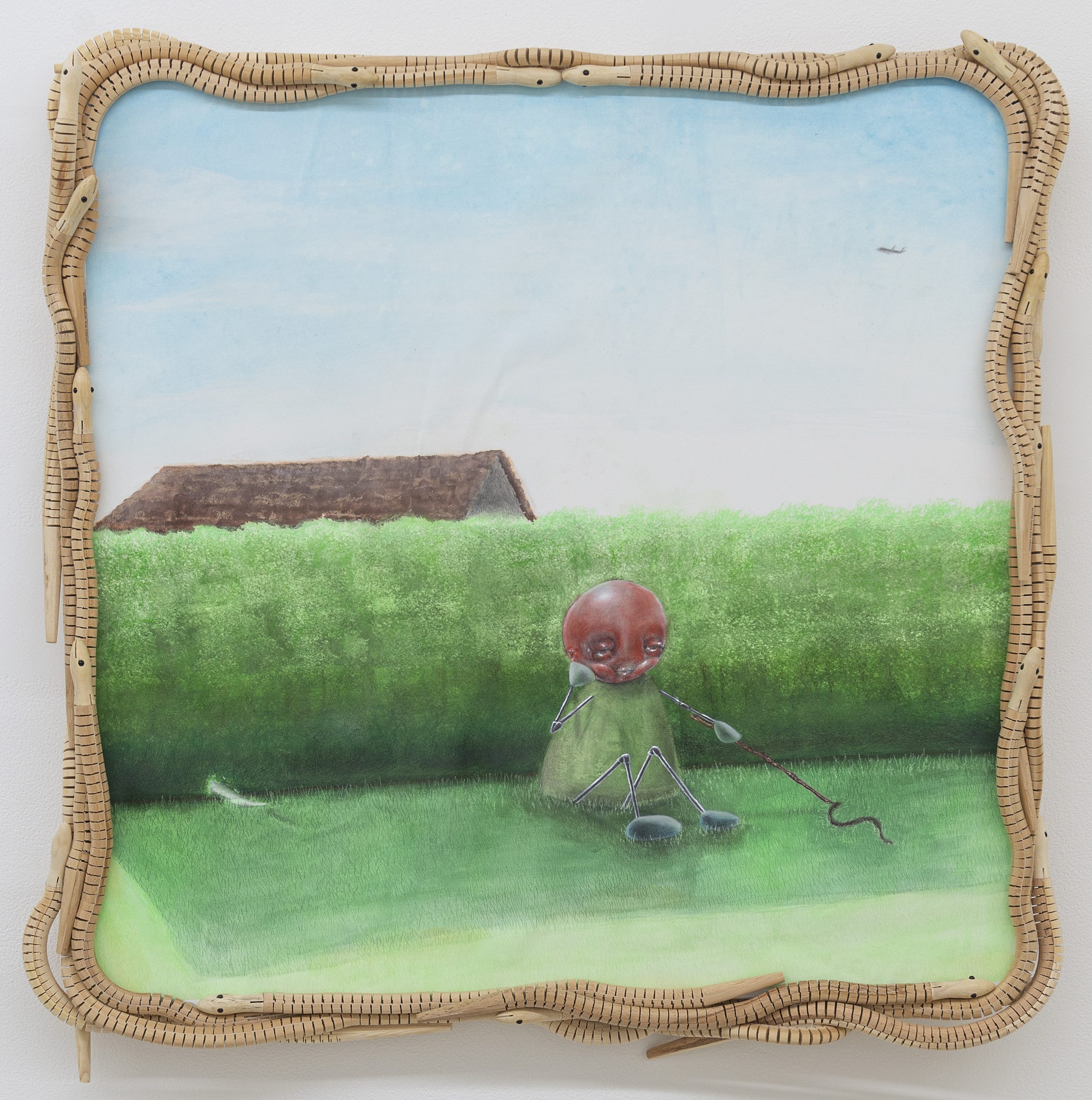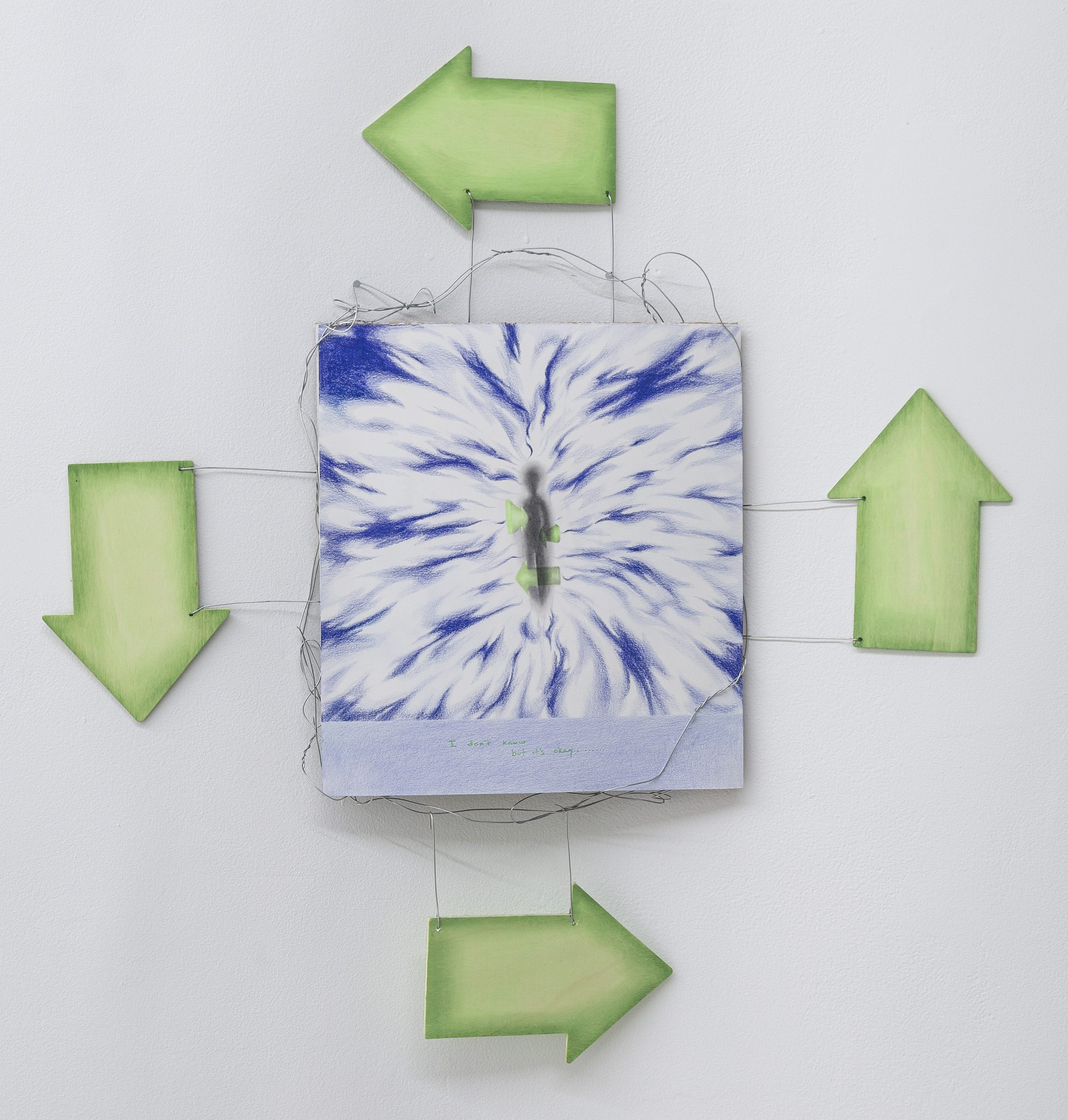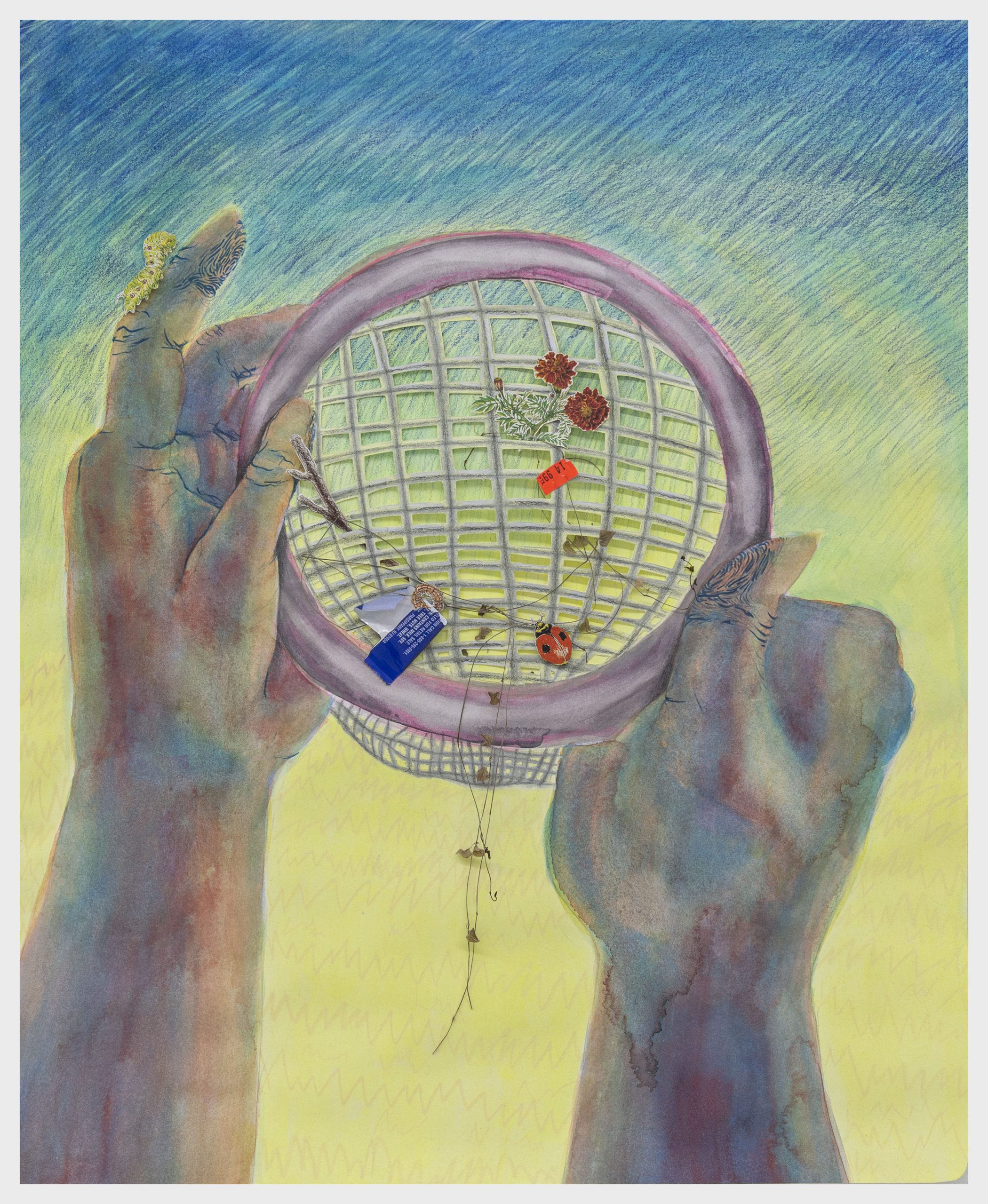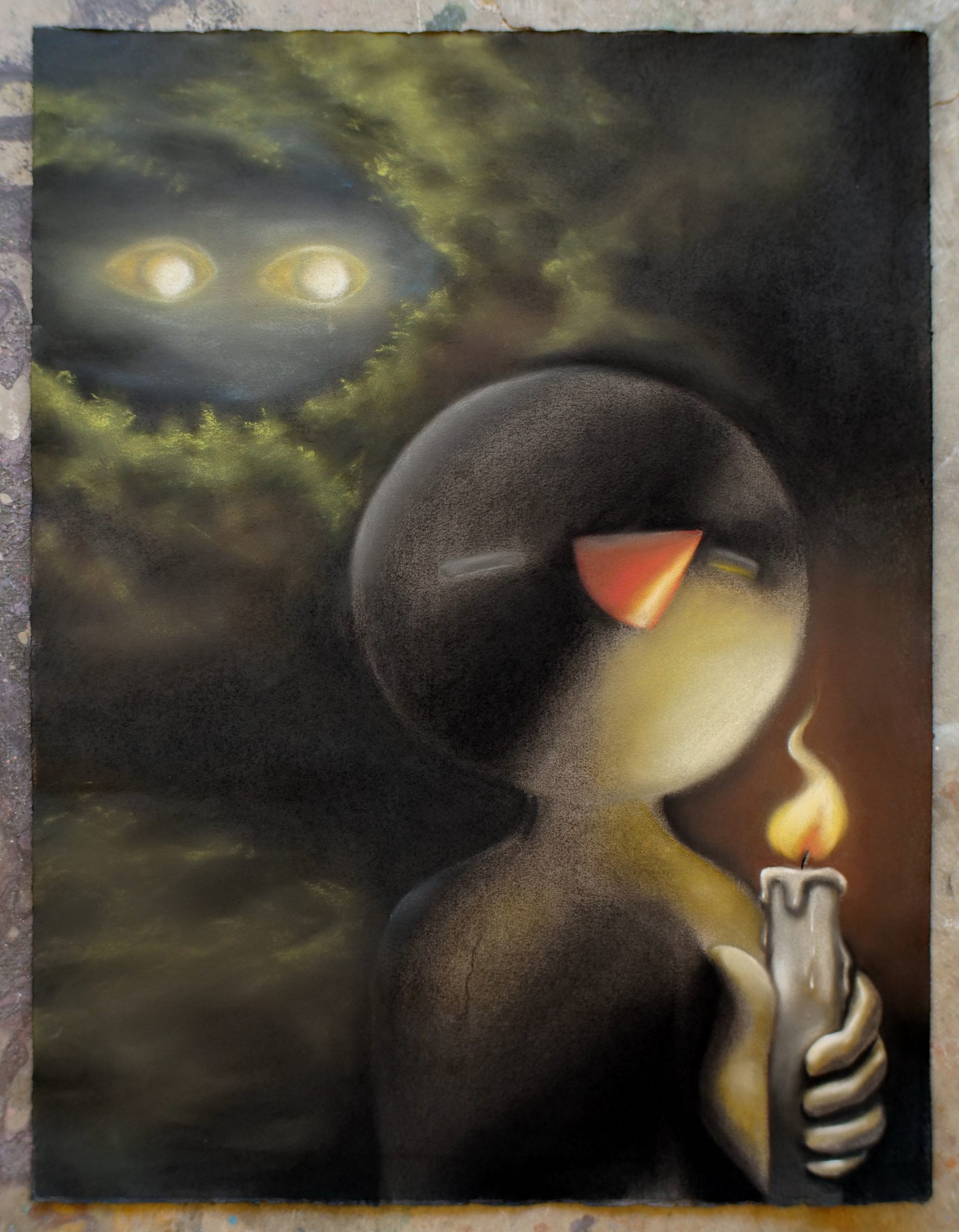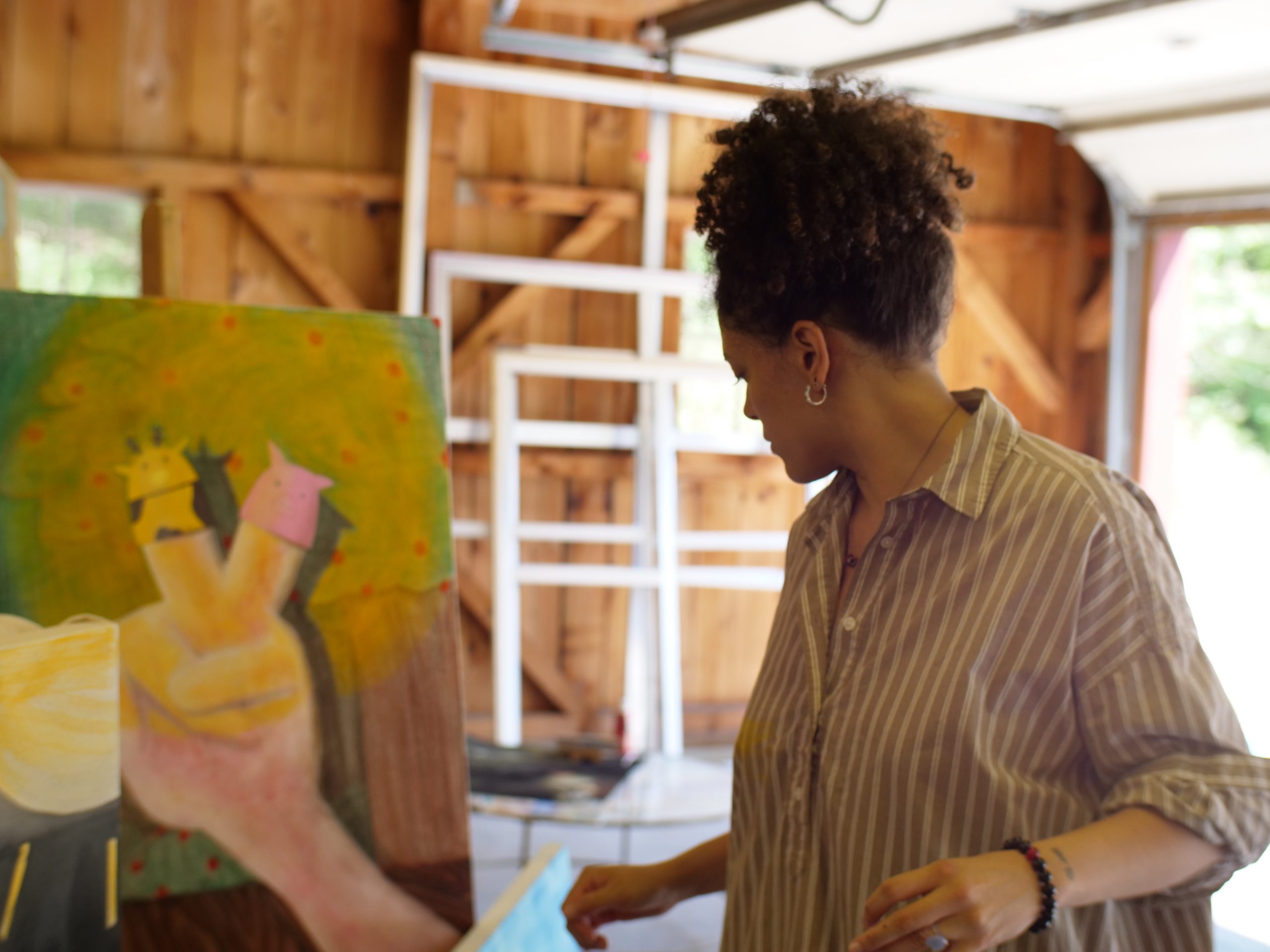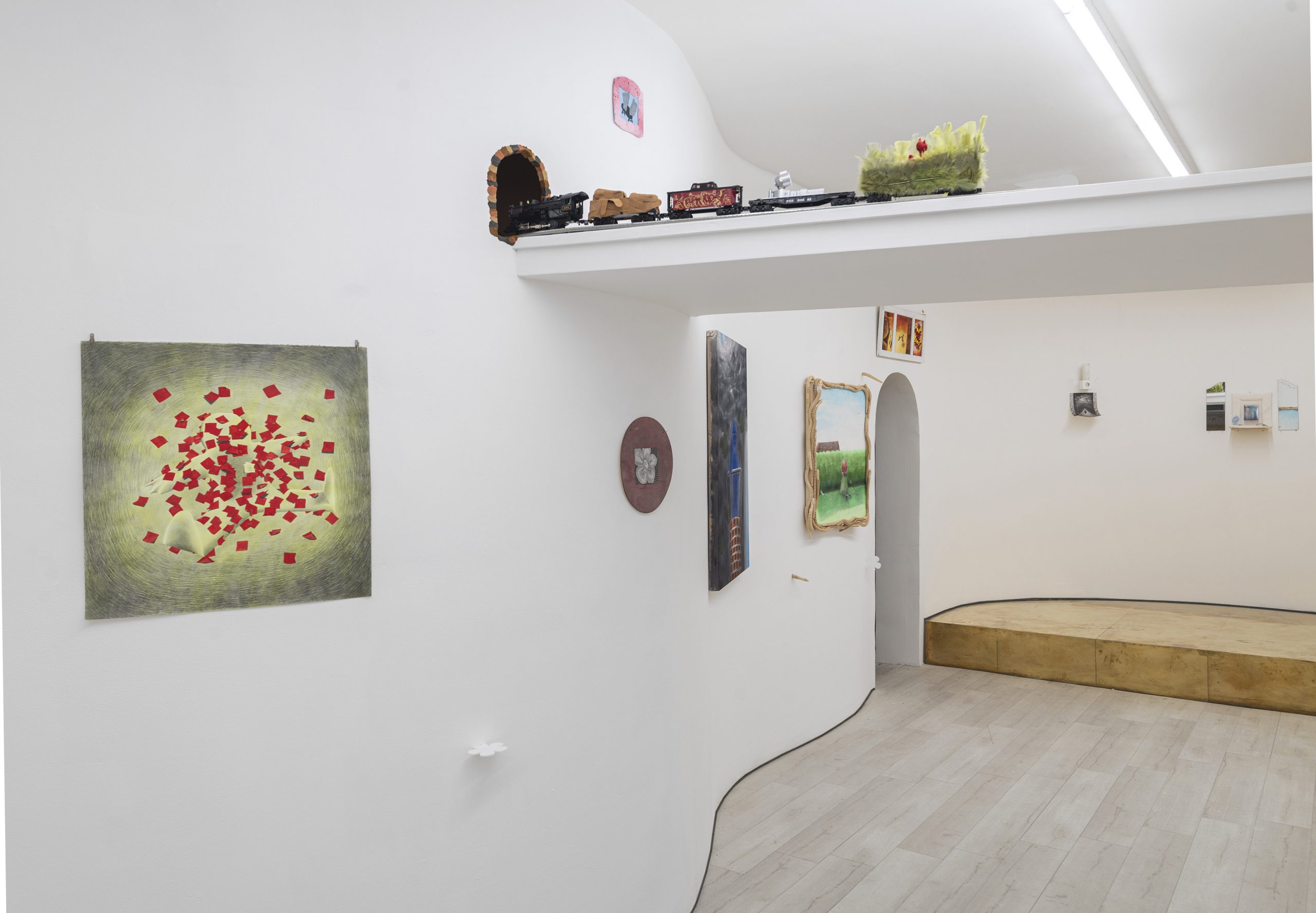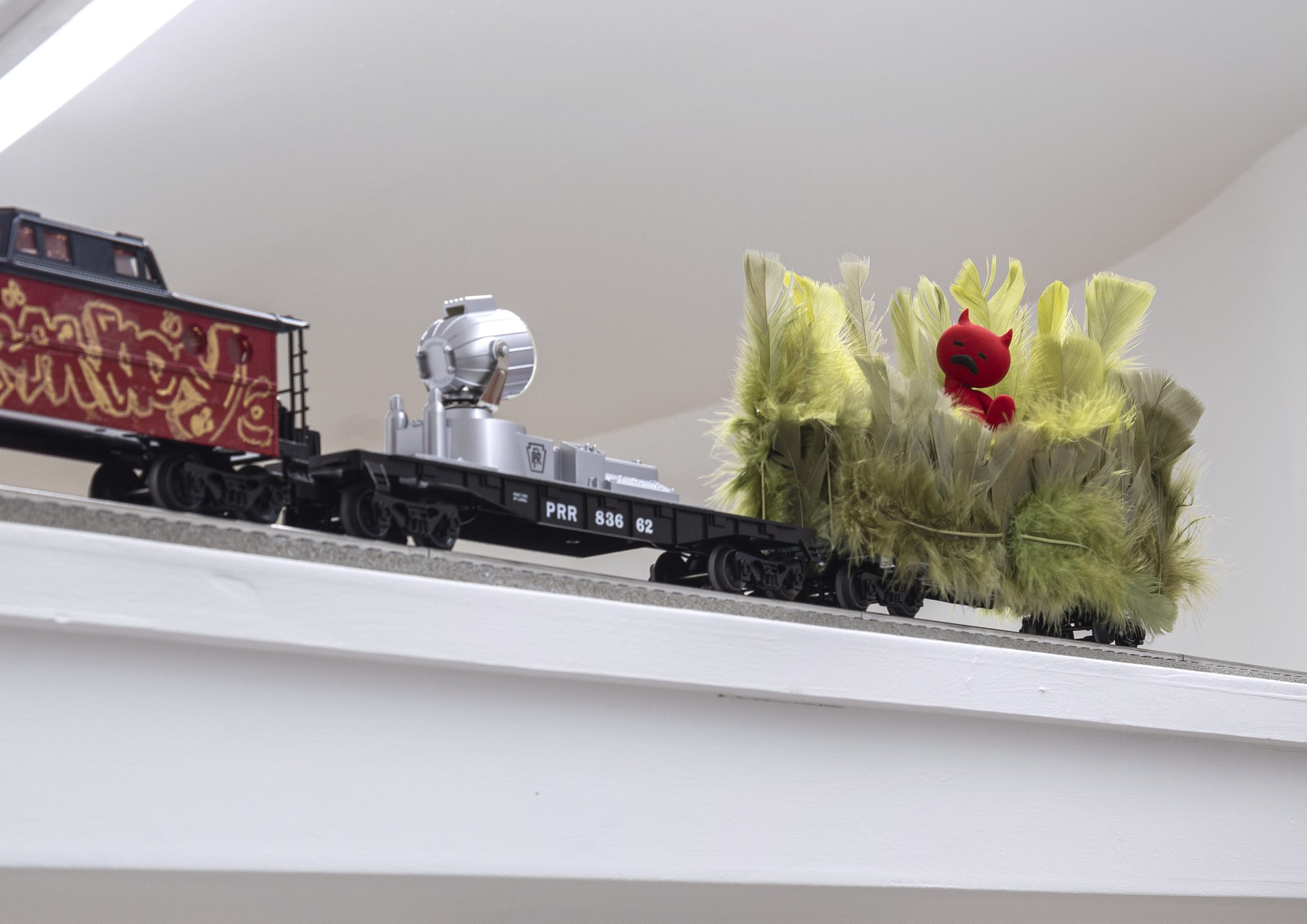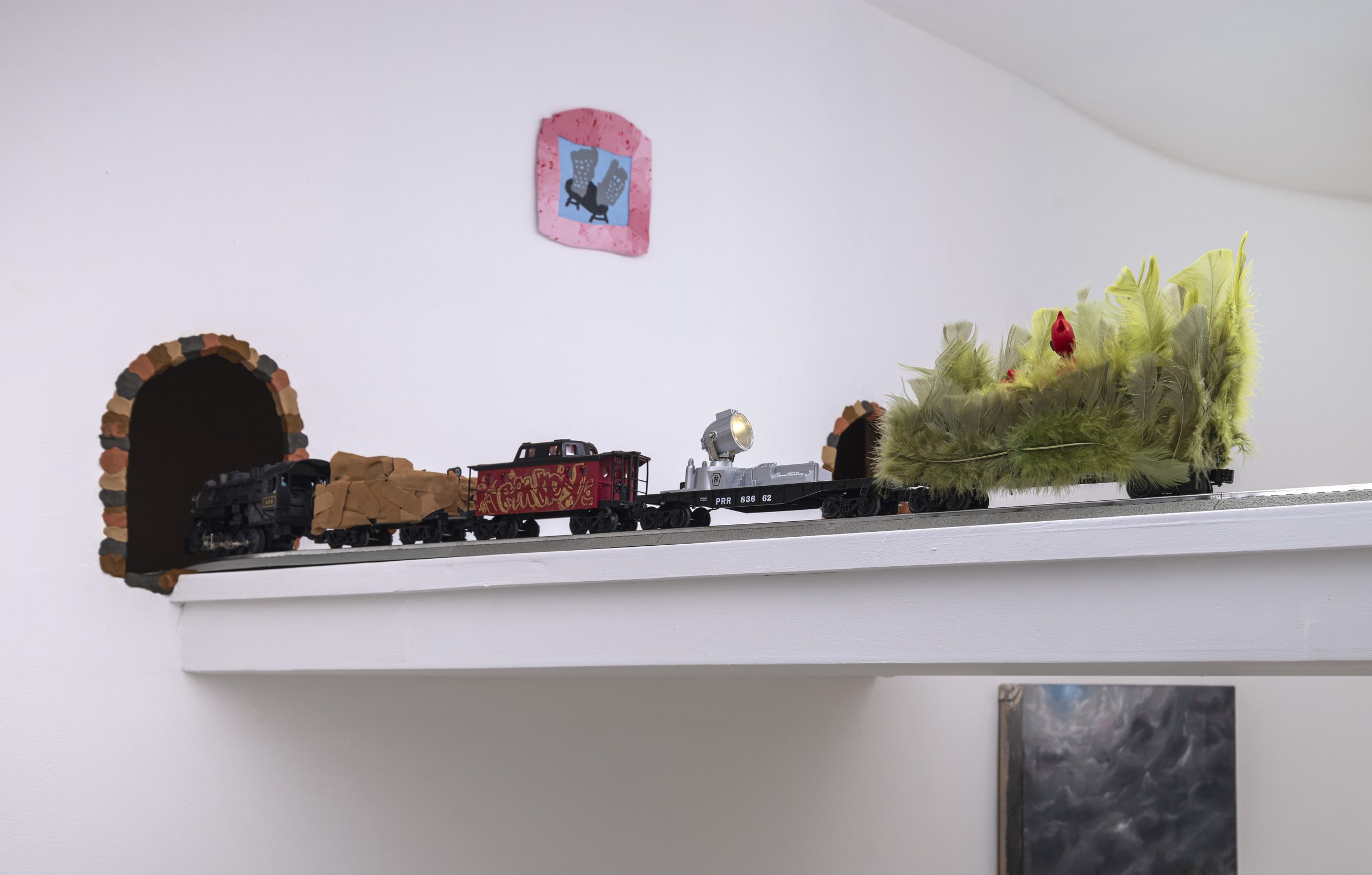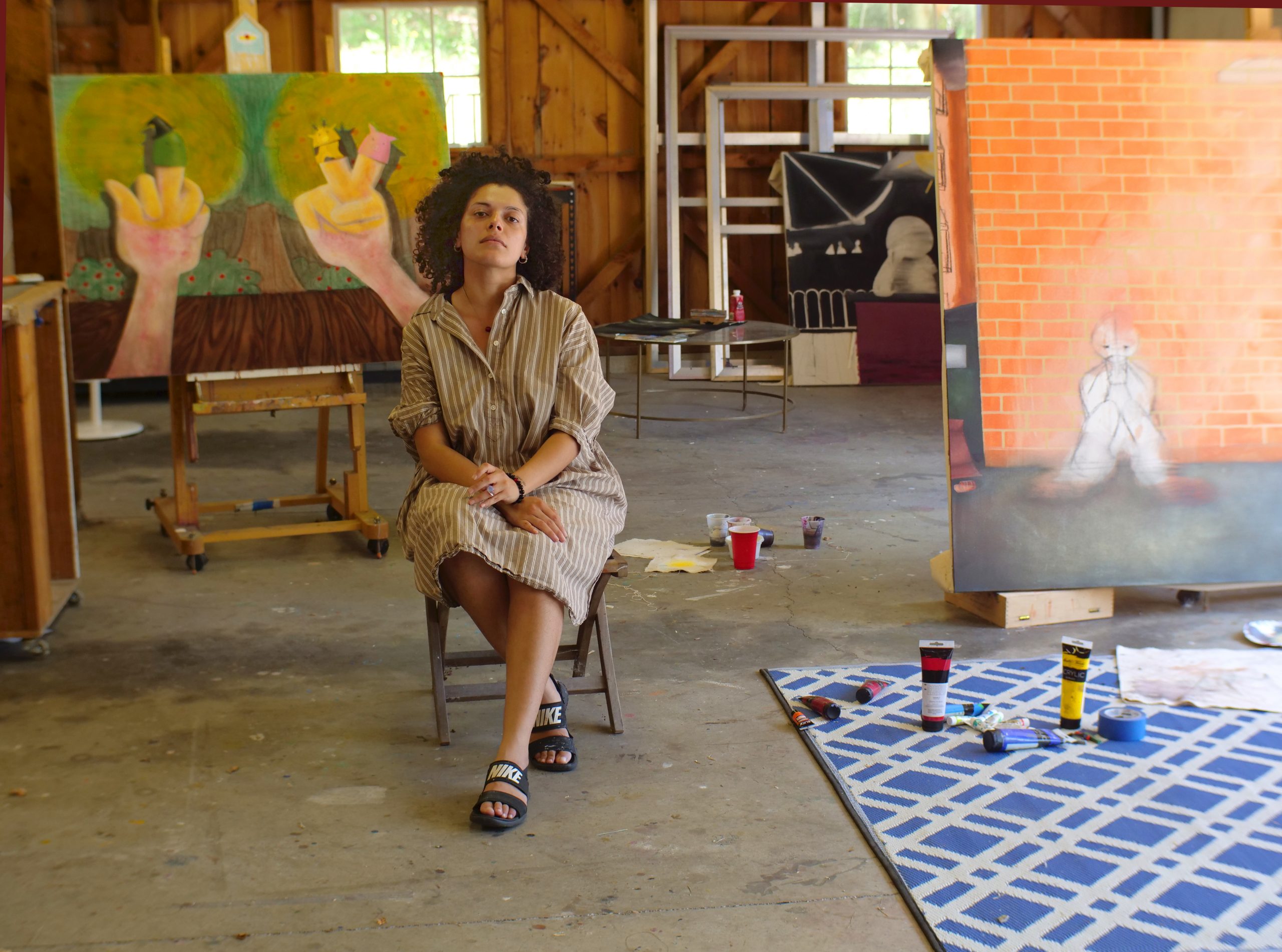
Where Things Happen #8 — Oct 2022
The work of Vyczie Dorado moves on this fine line between humor and existentialism, creating cute yet disquieting characters able to stand as universals for a set of human attitudes and behavioral patterns in today’s society.
When I visited her at the studio in Queens, NY, Vyczie welcomed me with a cute frogs jumper. Floating on the screen, some Animal Crossing characters in loop, accompanying all a series of manga and anime miniatures around the room.
All this immediately took me directly into her world, as to the visual universe I also grew up with, being born in the 90s in the age of Japanese cartoons colonizing all the Italian tv palinsesto, and with the emergence of Nintendo and Playstation.
In the room, her characters are progressively taking form between screens, hanging sheets of paper and figurines and visual notes that inspire them, as if we were in an animation or comic studio.
In particular, the most recent series of works appear to draw a lot from anime and videogame world, not just in their aesthetic, but also and foremost in the visual/psychological narrative and linguistic devices applied.
In fact, there’s always something cute, sometimes even playful in her scenes, but at the same time to most people they can also appear deeply disturbing and uncanny, because of the level of the psychological charge the artist inserts in the scene.
As we discuss the work, she explains that she really started to deal with these characters just with the pandemic, as she was looking to express all a series of missing sensations because of the lack of human interactions and forced isolation.
Being herself affected by immunodeficiency and thus forced to an extra level of cautive isolation, she felt the need to deeply explore human behavioral and relational patterns.
Dorado’ character are indeed centred around a series of abstract psychological and emotional moments we all go through in our life: they project their sensations in the scene, forcing the viewer to confront and naturally read them.
All her scenes appear to be centered around a specific feeling, which comes before any narrative intention, and gets then amplified by the surrounding atmosphere.
In this sense, behind the cuteness and the extreme simplification of forms, these cartoon-like figures seem to embark into an attentive but also unmerciful investigation of the monadism most individuals are inclined to today, unveiling the loneliness and fragility behind these socially constructed behaviors patterns.
Often faceless, anonymous, lost or alone, they’re represented in seemingly absurd settings that stand as both physical scenes and psychological states.
At the same time, the total absence of gender or racial identification, it’s what really allows her subjects to function more as some kind of general allegorical alter egos of human nature.
As we discuss these aspects of her work, I start realizing how those are indeed characters, but intended more in the classical Greek and then Latin meaning of “masks”, meaning stereotypical stock characters that represent a set of basic human attitudes.
Something we can find from primordial oral traditions, mythologies and folk tales, up to today’s cartoons and video games.
It’s worth observing, in this context, how the etymology of “person” itself actually takes us to Latin “persona” which was intended, again, more as a “mask”and a “character”, and derived from the greek πρόσωπον (prósōpon) meaning both “face; appearance as well as the mask used in ancient theater to denote a character or, more generally, a social role.
Dorado’ figures seem to perfectly respond and reflect this specific connotation, which places them well beyond the identification with a specific person or story, and thus allows the viewer to identify and project on them.
However, what seems even more interesting about Dorado’ almost unidentified characters is this level of universality, which allows the viewer to spontaneously empathize with them, read those scenes even without any narrative context, but also force them to confront and accept feelings and emotions. Something that in today’ society society is less and less practiced, with the widespread emotion free attitude/fear adopted especially among young professionals in big cities such as nyc.
In her most recent works the use of color and light is also becoming more dramatic, contributing in creating psychologically and emotionally characterized atmospheres that often emphasize a mood to an extreme, or its climax.
This actually reminded me of what often see manga/anime and videogames do, isolating the character full screen or page to a specific character’s emotional reaction or climax.
At the moment of our visit, Dorado was just returning from a residency Upstate NY at the Macedonia Institute.
Here, having more studio space, she embarked in a larger work featuring a view of an alley, with a towering red brick wall functioning as both a dramatic and metaphorical scene for a lonely character sitting dejected on the street ground.
She tells me the work was inspired by Randonautica, this new app that apparently through a complex system of algorithms and “molecules reading” takes people to whatever they’re looking for, encouraging contemporary flaneuries which can result though in totally unexpected or even traumatic experiences of findings, or getting lost on your path.
She was imagining the main figure taking part in this search, and getting lost.
Even from the way she represented him, it’s clear the primarily psychological and emotional charge she was looking to offer with the scene, and how he actually stands, again, more as a symbol of an universal condition everyone can identify with, before and beyond any narration.
She confesses to me that she’s going to work more on the lights and shadows, to emphasize the emotional atmosphere which is at the very center of the scene, before any figure.
Mostly working on delicate pastels on paper, Dorado’ practice has recently challenged the limits of its support, expanding into multiple multimedia layers: exploring some inventive sculptural arrangements, Dorado twists mediums into one another, interacting with the viewers with tricks and triggers that make the scene more dramatic but also more playfully interactive.
There’s also an intriguing mix of reality and fiction in all these playful staged situations, which came up in particular with some works recently presented for her show at Swivel Gallery in Brooklyn this summer.
Here, she had also included tridimensional elements, within the painting, as frame or as extension of it, so that her characters are aiming at a different interaction with the viewer, potentially materializing in the space beyond the flat surface of an illustration on paper, or of a screen.
She even had a little train running in space, where, as she tells me, Rady, one of her recurring characters, was having fun: with this playful approach Dorado forced the viewer further in this confrontation with her subjects, and the universal human characters they stand for.
She confesses to me that she would love to work in further developing her characters into narrations in the future, avoiding any literal approach to the work but just staging them into different situations so that the viewer can follow them, and more deeply identify into these subjects. Meanwhile, she’s also exploring digital animation and digital works, to further develop these narratives also on other dimensions.
I feel that this latter aspect it’s another direction and focus of her research worth further exploring, as her practice is diving and tapping deeper into psychology and behavior in Today’s society.
Also with the rise of use of the meta discussions about the relations between physical and digital space of experience, expression and identity will become more and more frequent.
In this sense, Dorado’ research could also help to raise a series of relevant questions and engage in an interesting confrontation about how we manage identity and emotions across new experiential digital and material spaces.






















